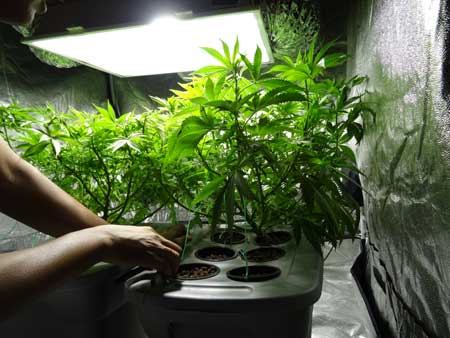Outdoors, cannabis plants need extra leaves to store nutrients and create an extra wall of defense in case the plant gets attacked by pests or otherwise loses all its leaves. But indoors there should be no pests, and you are there to give your plants the exact
nutrients it wants at the exact right time. This makes holding onto leaves a lot less useful for the plant, especially some plants which get extremely bushy without defoliation.
Cannabis isn’t the only plant that benefits from defoliation
To those naysayers who claim defoliation can NEVER work, I think it’s important to point out that cannabis isn’t the only plant that rewards growers with bigger yields and higher quality from defoliation. Some commercial crops, such as cotton, need to be defoliated during their grow to produce the best yields and quality of cotton. In fact, even after 40 years of intense study on cotton defoliation, there is still controversy and
ongoing research by commercial crop producers to further pinpoint the exact time and way to defoliate cotton plants in the field to produce the best results. In a
study with subterranean clovers, defoliation in early to mid flowering dramatically increased the number and size of flowers, but continuing defoliation until later in the flowering stage dramatically reduced flower yields.
Cowpeas and
some palms are other plants that produce better yields in response to thoughtful defoliation, but again yields are lower when too many leaves are taken, or if they’re taken at the wrong time.
Some palms produce more flowers in response to being defoliated

I think these examples demonstrate the main thing you need to remember: Defoliation is definitely not some magical way to increase cannabis yields; it’s a technique like any other and it can be done in both good and bad ways.
Let’s learn how to do defoliation the right way for cannabis plants!

Note: Cannabis defoliation works best when it’s combined with other cannabis plant training methods such as
topping or
LST.





















